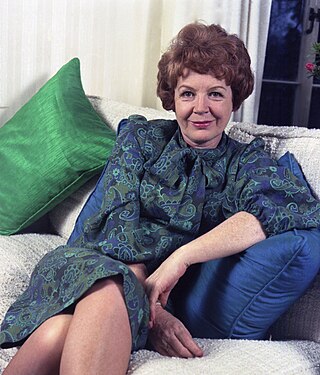
Phyllis Hannah Murray-Hill, known professionally as Phyllis Calvert, was an English film, stage and television actress. She was one of the leading stars of the Gainsborough melodramas of the 1940s such as The Man in Grey (1943) and was one of the most popular movie stars in Britain in the 1940s. She continued her acting career for another 50 years.
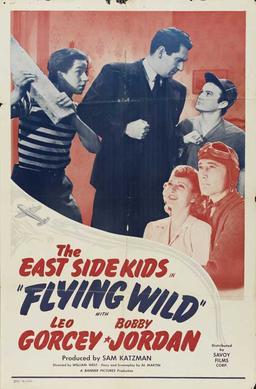
Flying Wild is a 1941 film directed by William Beaudine under the pseudonym "William West" as the fifth installment of the East Side Kids series which eventually totaled 22 films. The film is the team's first one in the spy film genre.
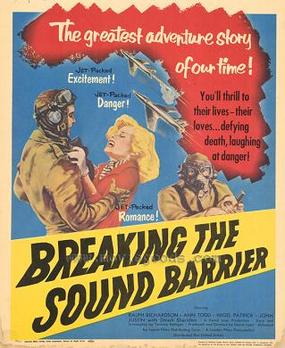
The Sound Barrier is a 1952 British aviation drama film directed by David Lean. It is a fictional story about attempts by aircraft designers and test pilots to break the sound barrier. It was David Lean's third and final film with his wife Ann Todd, but it was his first for Alexander Korda's London Films, following the break-up of Cineguild. The Sound Barrier stars Ralph Richardson, Ann Todd, John Justin and Nigel Patrick. It was known in the United States as Breaking Through the Sound Barrier and Breaking the Sound Barrier.

It’s in the Air is a 1938 British comedy film written and directed by Anthony Kimmins and starring George Formby, Polly Ward and Jack Hobbs. The film was released in the United States with the alternative title George Takes the Air in 1940. The film depicts Great Britain's preparations for war with Air Raid Warden training, mock air attacks dropping poison gas bombs, and the deployment of anti-aircraft weapons in the streets.

The Legion of the Condemned is a 1928 American silent film directed by William A. Wellman and produced by Jesse L. Lasky, Wellman, and Adolph Zukor and distributed by Paramount Pictures. Written by former World War I flight instructor John Monk Saunders and Jean de Limur, with intertitles by George Marion, Jr., the film stars Fay Wray and Gary Cooper.

The Air Mail is a 1925 American silent drama film directed by Irvin Willat and starring Warner Baxter, Billie Dove, and Douglas Fairbanks, Jr. It was produced by Famous Players–Lasky and distributed through Paramount Pictures. Filmed in Death Valley National Park and the ghost town of Rhyolite, Nevada, it was released in the United States on March 16, 1925.

Squadron Leader X is a 1943 British World War II spy drama directed by Lance Comfort and starring Eric Portman and Ann Dvorak. The screenplay was adapted by Miles Malleson and Wolfgang Wilhelm from a short story by Emeric Pressburger.

The Flight That Disappeared is a 1961 American science fiction film, produced by Robert E. Kent, directed by Reginald Le Borg, that stars Craig Hill, Paula Raymond, and Dayton Lummis. The film was released by United Artists.

Federal Fugitives is a 1941 American film noir directed by William Beaudine. The film stars Neil Hamilton, Doris Day, Victor Varconi, and Charles C. Wilson.
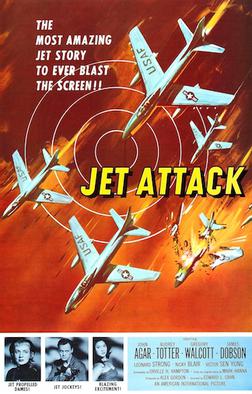
Jet Attack is a 1958 American aviation war film set in the Korean War, featuring United States Air Force (USAF) aircraft.
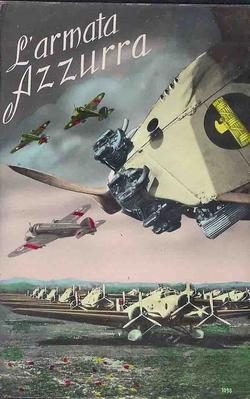
L'Armata Azzurra is a 1932 Italian aviation docu-drama and adventure film directed by Gennaro Righelli and starring Germana Paolieri and Ennio Cerlesi. It was Italy's first aviation drama film, with a fictional story that celebrated the Italian Air Force.
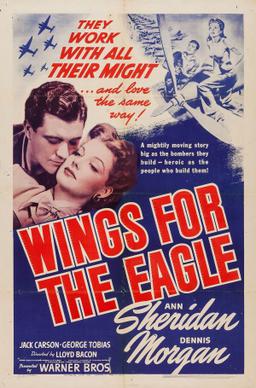
Wings for the Eagle is a 1942 American drama film starring Ann Sheridan, Dennis Morgan, Jack Carson and George Tobias, directed by Lloyd Bacon. It tells the story of workers at a Lockheed aircraft assembly plant in the months preceding the attack on Pearl Harbor. It was the first of 11 films in which Morgan and Carson appeared together, though they did not become known as a movie "team" until a few years later.

The Phantom Flyer is a 1928 American silent Western and aviation film directed by Bruce M. Mitchell and starring Al Wilson, Lillian Gilmore and Buck Connors. The film was produced and distributed by the Universal Pictures. The Phantom Flyer was one of a series of films that showcased the exploits of the stunt pilots in Hollywood.

Captain Swagger is a 1928 American sound crime drama film directed by Edward H. Griffith and stars Rod La Rocque. While the film has no audible dialog, it was released with a synchronized musical score with sound effects utilizing the RCA Photophone sound-on-film sound system. The film was released with both the sound-on-disc and sound-on-film formats. The film was produced and distributed by the Pathé Exchange company.

Conquest is a 1928 American aviation drama film, based on the short story Conquest by Mary Imlay Taylor. The film was made using the Vitaphone sound process. Conquest was directed by Roy Del Ruth, and stars Monte Blue, H.B. Warner and Lois Wilson. The film is a melodrama about an aircraft crash in Antarctica. Conquest is now considered a lost film, although the complete soundtrack exists on Vitaphone discs.
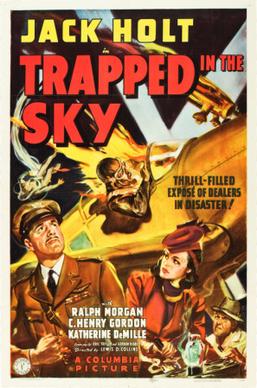
Trapped in the Sky is a 1939 American thriller film directed by Lewis D. Collins and produced by Larry Darmour for Columbia Pictures. The film stars Jack Holt, Ralph Morgan and Katherine DeMille. Holt is the "flyboy" who is trying to find the saboteurs of a "silent" aircraft. The plot device of a "noiseless" or stealthy aircraft is a familiar theme in aviation films of the period, including The Sky Ranger (1921), The Silent Flier (1926) and Eagle of the Night (1928).

A Romance of the Air is a 1918 American silent drama film based on the book En L'air (1918), by Bert Hall, one of America's first combat aviators, flying with the famed Lafayette Escadrille in France before the United States entered World War I. Directed by Harry Revier, the film was heavily influenced by the exploits of Hall, who was featured in the film and took an active role in promoting and marketing A Romance of the Air.
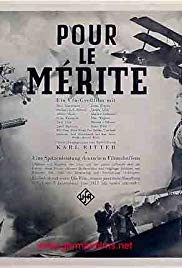
Pour le Mérite is a 1938 propaganda film produced and directed by Karl Ritter for Nazi Germany. The film follows the story of officers of the Luftstreitkräfte in the First World War who were later involved in the formation of the Luftwaffe. Pour le Mérite propagates the "stab legend", which consigns the German military defeat in World War I to an alleged treason in the homeland. At the same time, Ritter also glorifies the former fighter pilots as heroes of National Socialism.
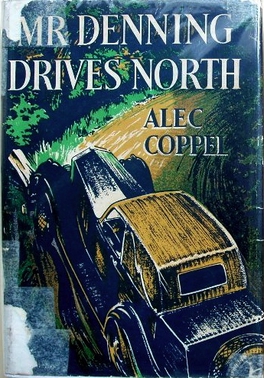
Mr. Denning Drives North is a 1950 thriller novel by the British-Australian writer Alec Coppel. When successful and happily married aircraft manufacturer Tom Denning attempts to commit suicide by crashing a plane, detectives uncover a murder in his past background that has driven him insane with guilt.

The Net is a 1952 thriller novel by the British writer John Pudney.




















